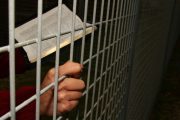Russian President Vladimir Putin and Chinese President Xi Jinping (shown) were the dominant players at the Asia-Pacific Economic Cooperation (APEC) conference, held this year in Bali, Indonesia from October 5-8. President Obama, who did not attend the event, sent a delegation led by Secretary of State John Kerry. Taking part in the APEC-2013 forum were business and political delegations from Japan, China, Malaysia, Russia, Australia, Brunei, Vietnam, Thailand, the Philippines, Indonesia, Canada, Mexico, New Zealand, Papua-New Guinea, Peru, the USA, Singapore, Taiwan, South Korea and Chile.
Minnie Chan, writing in the Hong Kong-based South China Morning Post on October 10, noted of the growing Beijing-Moscow axis:
When President Xi Jinping met his Russian counterpart Vladimir Putin at the Asia-Pacific Economic Co-operation (Apec) leaders meeting in Bali this week, both greeted each other like old friends.
“This is the fifth meeting we had during the year and it is strong evidence of the high level and uniqueness of China-Russia relations,” Xi was quoted by Xinhua as telling Putin.
Just five weeks ago, Xi met Putin in St Petersburg at the G20 summit, during which China and Russia opposed a US proposal for military intervention in Syria after UN chemical weapons inspectors confirmed that hundreds of civilians were killed by the nerve gas sarin near the capital, Damascus, on August 21.
The past few months have witnessed major advances in Russian-Chinese joint ventures in the economic and military spheres.
In June, Rosneft, the oil giant owned by the Russian government and China National Petroleum Corporation (CNPC), the oil behemoth owned by the Chinese government, signed a $270-billion deal to supply China with oil over 25 years, an agreement that Putin hailed as “unprecedented.”
The agreement was signed by Rosneft chief executive Igor Sechin and CNPC head Zhou Jiping in the presence of Putin and visiting Chinese Vice Premier Zhang Gaoli.
“An estimated value of the contract in current market parameters is absolutely unprecedented — 270 billion dollars,” Putin told participants of the annual Saint Petersburg International Economic Forum.
“Essentially, this is a new era of cooperation which means that in our cooperation with our strategic partners we shift from purely raw supplies to full-fledged cooperation in the engineering and manufacturing sphere,” Putin said.
Igor Sechin, a top Putin ally, and, like Putin, a former career officer in Russia’s intelligence services, told reporters earlier that the deal would involve the delivery of more than 360 million tons of oil over 25 years with a total value of $270 billion.
In September, executives of CNPC and Russia’s state-owned gas company, Gazprom, inked a strategic deal in the presence of Presidents Putin and Xi for Gazprom to dramatically increase its export of natural gas to China. Details of the amount of gas and the price are expected to be worked out by the end of the year.
In July, Russia and China joined forces in two large-scale military exercises. “Peace Mission 2013” was conducted at the Chebarkul military training area in the Chelyabinsk region of Russia’s Urals, while “Joint Sea 2013” took place in the Sea of Japan.
The 20-day “Peace Mission 2013” exercise involved 1,500 ground and air forces and over 250 pieces of military hardware, including 20 aircraft and helicopters, Presstv.com reported on August 3.
“China has dispatched over 600 personnel as well as tanks, armored personnel carriers, light reconnaissance vehicles, 120-mm self-propelled howitzers, 152-mm self-propelled guns, JH-7A fighter-bombers and helicopters to participate in the drill,” according to the Presstv dispatch.
ISN, the International Relations and Security Network, reported on the “Joint Sea 2013” exercises:
For the naval exercise, the two sides dispatched some of their best and most powerful naval platforms. Seven People’s Liberation Army (PLA) Navy ships traveled some 1,300 km from Qingdao to Vladivostok to participate. This was by far China’s single biggest deployment of naval forces in any joint exercise outside China. For this annual drill, the two navies deployed 18 surface ships, a Russian submarine, eight airplanes (three from China), and two Special Forces units. The declared goals of the exercise were: 1) deepening bilateral strategic partnership relations; 2) increasing the ability to cope with common threats from the sea; 3) enhancing the ability of joint operations; and 4) optimizing interoperability.
Photo of Vladimir Putin and Xi Jinping at the Asia-Pacific Economic Cooperation (APEC) conference: AP Images




